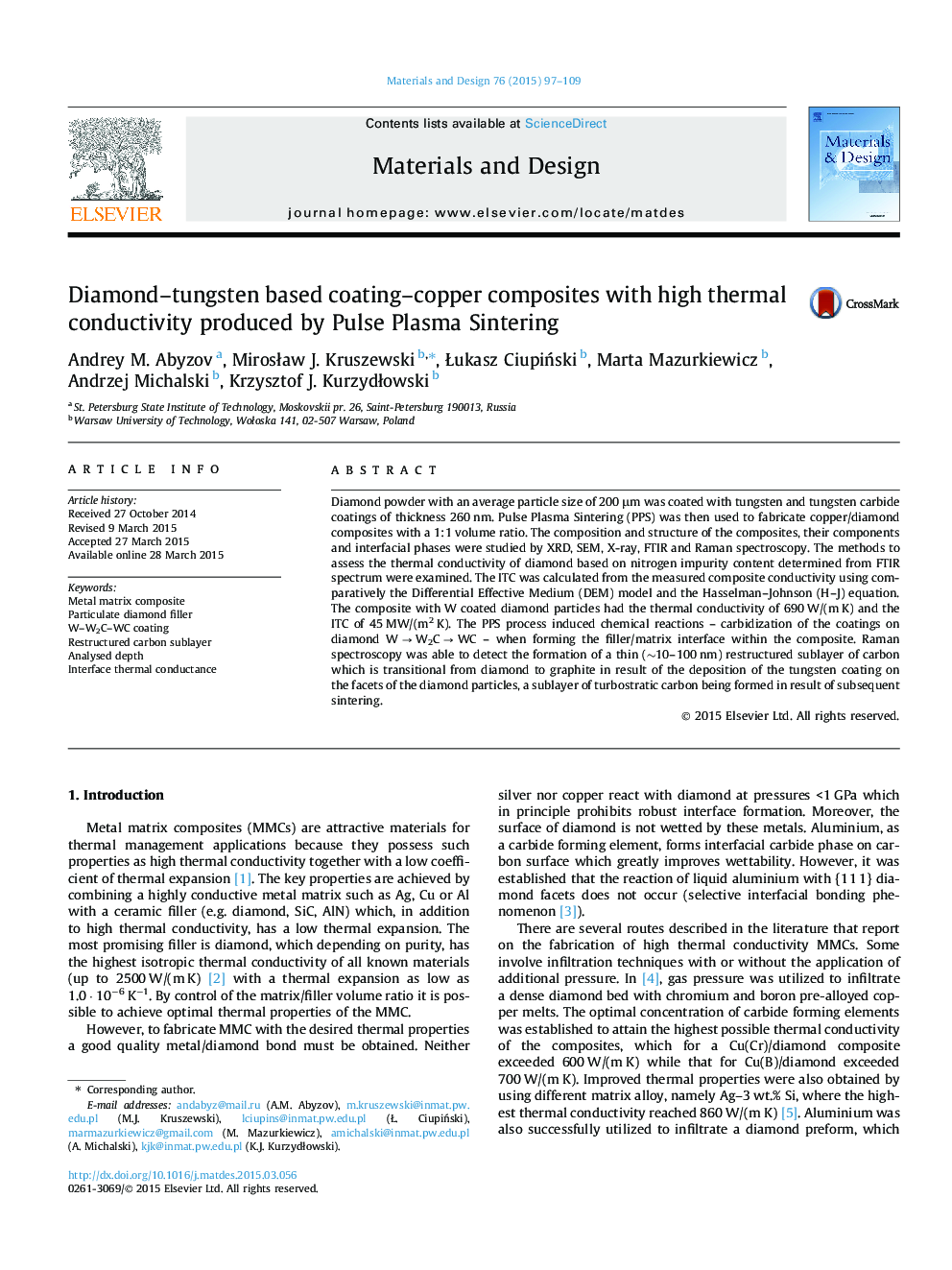| Article ID | Journal | Published Year | Pages | File Type |
|---|---|---|---|---|
| 828610 | Materials & Design (1980-2015) | 2015 | 13 Pages |
•Diamond particulate filler was pre-coated by W and WC submicron layers.•When sintering diamond–copper composites, coating carbidization W → W2C → WC occurred.•Applying coating and sintering, restructured carbon sublayer formed and transformed.•Raman spectra indicate transition from diamond to a graphite form of carbon.
Diamond powder with an average particle size of 200 μm was coated with tungsten and tungsten carbide coatings of thickness 260 nm. Pulse Plasma Sintering (PPS) was then used to fabricate copper/diamond composites with a 1:1 volume ratio. The composition and structure of the composites, their components and interfacial phases were studied by XRD, SEM, X-ray, FTIR and Raman spectroscopy. The methods to assess the thermal conductivity of diamond based on nitrogen impurity content determined from FTIR spectrum were examined. The ITC was calculated from the measured composite conductivity using comparatively the Differential Effective Medium (DEM) model and the Hasselman–Johnson (H–J) equation. The composite with W coated diamond particles had the thermal conductivity of 690 W/(m K) and the ITC of 45 MW/(m2 K). The PPS process induced chemical reactions – carbidization of the coatings on diamond W → W2C → WC – when forming the filler/matrix interface within the composite. Raman spectroscopy was able to detect the formation of a thin (∼10–100 nm) restructured sublayer of carbon which is transitional from diamond to graphite in result of the deposition of the tungsten coating on the facets of the diamond particles, a sublayer of turbostratic carbon being formed in result of subsequent sintering.
Graphical abstractFigure optionsDownload full-size imageDownload as PowerPoint slide
